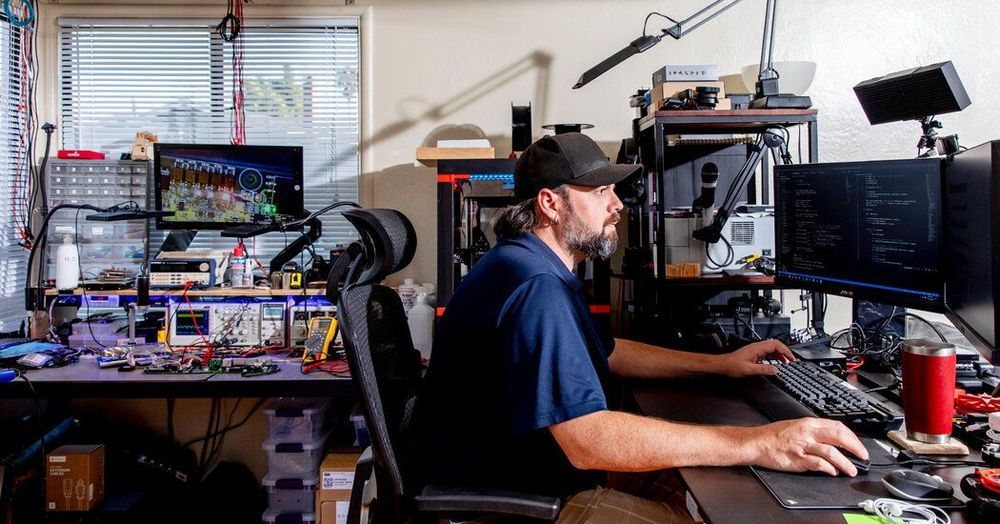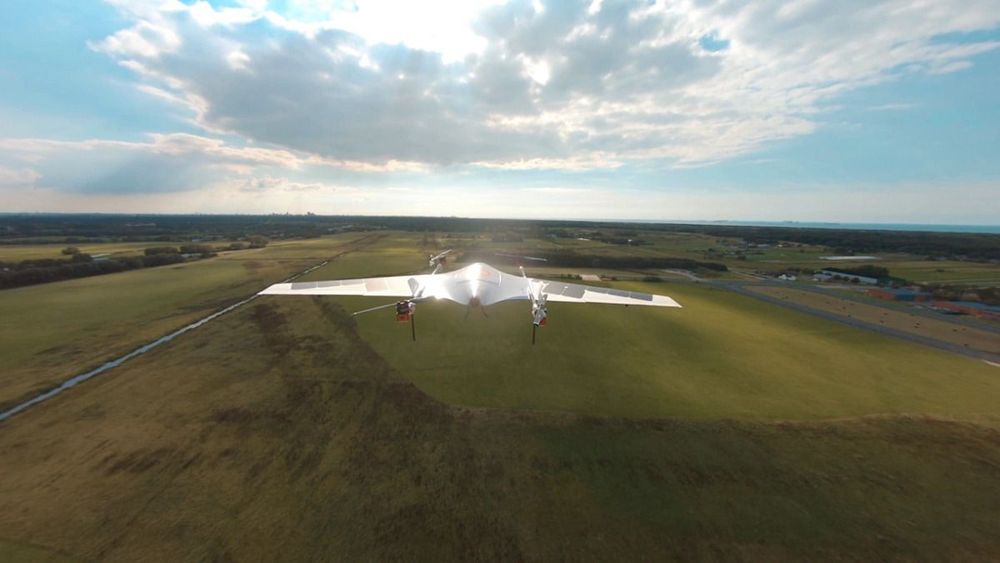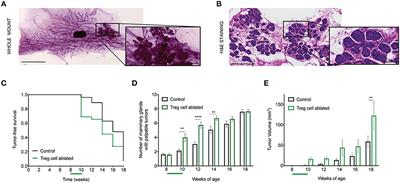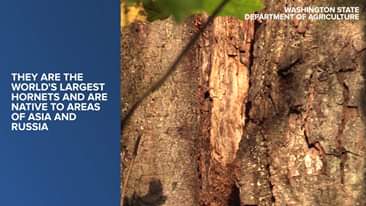A mysterious startup reveals a groundbreaking solar energy achievement.


A mysterious startup reveals a groundbreaking solar energy achievement.

But Silicon Valley is not the home of ingenuity for nothing. When the pandemic hit, many start-up engineers in the area, like Dr. Wessells, moved their gear into their home garages so they could keep innovating. And if it wasn’t the garage, then it was the living room.
Labs closed in the pandemic, but innovation doesn’t stop. So while some workers have the home office, engineers have the garage.

GE unveils its largest wind turbine prototype yet, a 13MW behemoth that stands 248 metres tall and destined for use in offshore wind farms.
Wind turbine manufacturer GE Renewable Energy has unveiled latest wind turbine prototype, an optimised version of its Halifax-X offshore wind turbine design that can deliver a massive 13MW of output.
It is the largest turbine that GE has produced, standing 248 metres tall, with 107 metre long blades and offers around double the generation capacity of most wind turbines currently deployed around the world.
GE said that a working version of the wind turbine, optimised for offshore projects, had been deployed and was currently undergoing a series of tests to satisfy the requirements for certification.

Moving from one-algorithm to one-brain is one of the biggest open challenges in AI. A one-brain AI would still not be a true intelligence, only a better general-purpose AI—Legg’s multi-tool. But whether they’re shooting for AGI or not, researchers agree that today’s systems need to be made more general-purpose, and for those who do have AGI as the goal, a general-purpose AI is a necessary first step.

Humans regularly tackle and solve a variety of complex visuospatial problems. In contrast, most machine learning and computer vision techniques developed so far are designed to solve individual tasks, rather than applying a set of capabilities to any task they are presented with.
Researchers at York University in Canada have been trying to better understand the mechanisms that allow humans to actively observe their environment and solve the wide range perception tasks that they encounter every day, with the hope of informing the development of more sophisticated computer vision systems. In a paper pre-published on arXiv, they presented a new experimental setup called PESAO (psychophysical experimental setup for active observers), which is specifically designed to investigate how humans actively observe the world around them and engage with it.
“The hallmark of human vision is its generality,” Prof. John K. Tsotsos, one of the researchers who carried out the study, told TechXplore. “The same brain and visual system allow one to play tennis, drive a car, perform surgery, view photo albums, read a book, gaze into your loved one’s eyes, go online shopping, solve 1000-piece jigsaw puzzles, find lost keys, chase after his/her young daughter when she appears in danger and so much more. The reality is that as incredible as AI successes have been so far, it is humbling to acknowledge how far there still is to go.”

A pair of statisticians at the University of Waterloo has proposed a math process idea that might allow for teaching AI systems without the need for a large dataset. Ilia Sucholutsky and Matthias Schonlau have written a paper describing their idea and published it on the arXiv preprint server.
Artificial intelligence (AI) applications have been the subject of much research lately, with the development of deep learning networks, researchers in a wide range of fields began finding uses for it, including creating deepfake videos, board game applications and medical diagnostics.
Deep learning networks require large datasets in order to detect patterns revealing how to perform a given task, such as picking a certain face out of a crowd. In this new effort, the researchers wondered if there might be a way to reduce the size of the dataset. They noted that children only need to see a couple of pictures of an animal to recognize other examples. Being statisticians, they wondered if there might be a way to use mathematics to solve the problem.

Netherlands-based technology companies Avy and Wattlab have conducted the first test flight of a drone prototype that is planned to be used in medical projects in Africa.
Wattlab, a Dutch clean-tech start-up founded by Sweden-based power utility Vattenfall and Delft University of Technology, and Netherlands-based drone manufacturer Avy have announced that a drone equipped with special solar foils produced by Wattlab has successfully performed its first test flight.
“The solar-powered prototype is designed to be used for urgent medical transportation, emergency services, and nature conservation,” the two companies stated, adding that the solar films were installed on the wings while maintaining aerodynamics and without increasing significantly the weight. “The solar technology developed in this project is fully integrated into the wing shape and adds no extra weight,” explained Bo Salet, founder of Wattlab.
In the future, the two tech companies are planning to reduce the wings’ weight, increase their surface, and deploy more solar films. “Solar cells with a higher efficiency will be tested in the coming month,” they further explained.

Ductal carcinoma in situ (DCIS) is a non-obligate precursor of breast cancer, and it only progresses to invasive breast cancer in around 40% of patients. While immune infiltrates have been observed in these early cancer lesions, their potential prognostic value is still unclear. Regulatory T (Treg) cells accumulate in advanced breast cancers, and predict poor outcome. We have shown before that ablation of Treg cells in established tumors leads to significant decrease in primary and metastatic tumor burden. In this work, we sought to investigate Treg cell function in the progression from non-invasive to invasive breast cancer lesions. To this end, we used the murine mammary tumor virus polyoma middle T (MMTV-PyMT) murine model of spontaneous, stage-wise breast carcinogenesis crossed to Foxp3DTR knock in mice, allowing Treg cell ablation by administration of diphtheria toxin. Transient targeting of Treg cells at the in situ carcinoma stage resulted in a significant increase in the number of tumor-bearing mammary glands and size of growing tumors compared with control mice. Whole mammary gland mounts and histological examination confirmed larger emergent tumor area in Treg cell-ablated mice, and revealed that these tumors were characterized by a more advanced tumor staging, with presence of early invasion, increased desmoplasia and collagen deposition. Furthermore, Treg cell ablation increased the percentage of cancer stem/progenitor cells in the mammary compartment. Interestingly, Treg cell ablation resulted in increased inflammatory cytokines IL-4 and IL-5 with a concomitant reduction in classically activated tumor associated macrophages. This TH2-biased immune regulatory mammary inflammation was consistent with the enhancement in tumor promotion that we observed. Overall, our study demonstrates that Treg cells oppose breast cancer progression at early stages, raising a cautionary note regarding the consideration of immune intervention targeted at boosting immune responses for DCIS.
While death from breast cancer has slowly declined in the past few years, mammographic screening has led to a dramatic increase in the detection of pre-invasive breast lesions in women (1–3). This paradoxical observation can be explained by the fact that only a low percentage of early breast disease progresses to invasive, metastatic carcinomas. Ductal carcinoma in situ (DCIS) is a heterogenous group of neoplastic lesions confined to the breast ducts, and can remain indolent for life in up to 60% of cases. Patients diagnosed with DCIS undergo breast-conserving therapy or mastectomy, frequently accompanied by radiotherapy and in some cases, hormonal therapy. Thus far, there are no reliable parameters to distinguish those cases that will progress, resulting in significant overtreatment.

No thank you!! 🙅♀️🙅♂️ A nest of Asian giant hornets, aka Murder Hornets, was found for the first time within the U.S. in Washington state. State officials plan to eradicate the invasive species. https://bit.ly/37xshZj